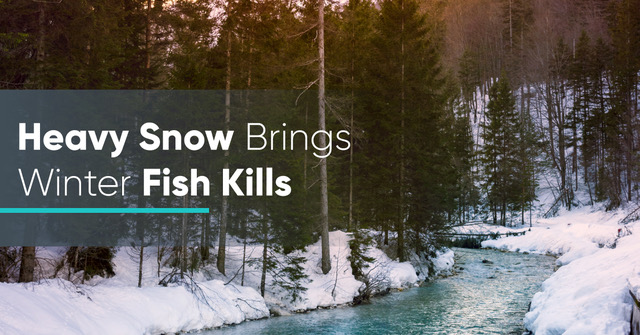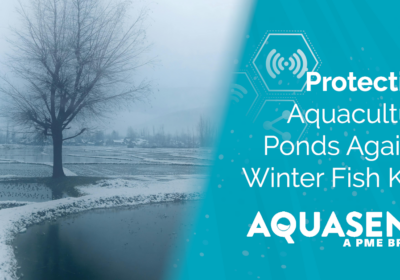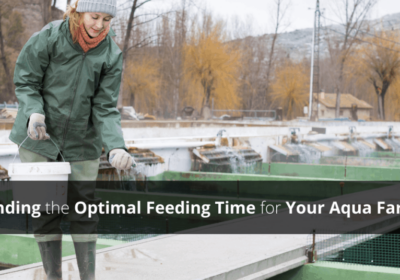Heavy Snow Brings Winter Fish Kills

In recent months, the United States has experienced multiple strong weather systems that have taken their toll on communities around the nation. The effects of late winter storms are now being seen in lakes in northeastern states with dead fish beginning to surface along many shores.
Heavy Snowpack Reduces Oxygen
Once a lake is covered in snow and ice, aquatic plants are the sole producers of dissolved oxygen in the water. If snow and ice reduce the amount of sunlight available to the plants, the level of dissolved oxygen in the water falls, resulting in fish kills.
Although winterkills are not uncommon, this year’s heavy snow, later in the year, has resulted in an unusually high number of fish kills. The aftermath is more noticeable in smaller, more shallow bodies of water, although the magnitude of the effect of these weather conditions will be unclear until all of the ice has melted, and the remaining fish populations can be observed.
Recovering from a Winterkill
Typically, winterkills do not eradicate all of the fish within a lake but the amount of oxygen available has different impacts on different types of fish.
- Trout, bluegill, and largemouth bass all require higher levels of dissolved oxygen to survive, with kills happening when dissolved oxygen levels drop below 5 parts per million (ppm).
- Walleye, yellow perch, northern pike, carp and crappie can survive with oxygen levels reduced to 2 ppm.
Though fish kills can be disturbing to a bystander, they can actually bring some benefits. Winterkills can lead to increased water quality when they reduce the amount of carp living in the water. Wildlife officials will take into account the number of winterkills that took place in any given lake when restocking begins.
Continuous Monitoring from Aquasend
Continuous monitoring of your farm’s water is crucial for the survival of your fish and reduces the chances of fish kills happening. At Aquasend we’re dedicated to delivering quality monitoring devices at an affordable price. To learn more about Aquasend’s real-time monitoring solutions, contact us today.


